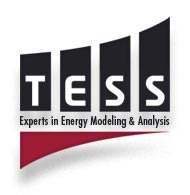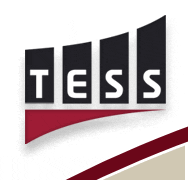22 NORTH CARROLL STREET - SUITE 300
MADISON, WI 53703
FAX: 608.278.1475
INFO@TESS-INC.COM
Engineering Services
Because our experience in simulation and modeling has given us the opportunity to see and study such an array of technical projects spread across the world both geographically and technically, we have found ourselves asked on occasion to provide engineering services which, while linked to modeling, fall into more traditional categories.
Site Analysis and Feasibility Studies
In considering small scale renewable energy projects such as solar domestic water heating, photovoltaics or single wind turbines, resource access is of primary importance. In considering the use of geothermal heat pumps, the local soil’s capacity to store energy is equally important. At TESS we have carried out a number of site analyses coupled with modeling studies to assess the feasibility and appropriateness of a specific technology at a specific site.
Analysis of Site-Measured Data
The perennial question: is my system saving me the energy that I think it is? The way we usually approach these problems is two-fold. We pour over data that was measured at the site during actual conditions and then we use that data to calibrate simulation models. The calibrated models can then be used to find system faults, to watch for system degradation over time, or to see whether there is some limiting factor in the installed system that is limiting its performance. In a recent project to match measured PV production to simulated results, we found that the inverters were power limiting the production; even though the PVs were producing more power during peak sun hours, the inverters were limiting system power production to 1.5 kW per inverter.
Design Review
One of the exciting things about simulating and modeling innovative technologies is that we get the opportunity to delve into the physics of devices and gain a deep understanding of their pros and cons when they are applied and installed in systems. Having spent over 10 years on such analyses, we find ourselves increasingly asked to comment on the appropriateness of a particular technology in a particular setting or to assess a design, analyze its strengths, find its weaknesses and suggest alternatives.
Technical Report Generation
A large majority of the projects that we carry out finish with the submission of a technical report that covers the scope of the project, methodologies employed, discussions of the reasoning behind successful methodologies as well as discussions of strategies that did not work out, detailed analysis of results and conclusions. Reports have ranged in scope from simple media-friendly project profiles to detailed, full-scale technical reports submitted to the National Energy Labs. A significant number of those technical reports have later been condensed into articles published in journals and conference proceedings. Refer to the Publications section of our web site for more information. In other cases, we deliver a software package that has been customized to fit the needs of the client, thereby allowing the client to analyze the system in great detail and study the dynamic impacts of changing system parameters on the performance of the system.

